- FAIRFAX703.206.0506



Home » Plastic Surgery Procedures » Tummy Tuck After Weight Loss
| PROCEDURE SUMMARY | |
|---|---|
| Pain Level After Surgery | Moderate |
| Anesthesia | General |
| Duration of Surgery | 3-4 hours |
| Scars | Lower abdomen, from hip to hip, and around the belly button |
| Final Results | 6-12 months |
| Return to regular activity | 3 weeks |
| Resume Exercise | 4 weeks |
| Price Range | Call for pricing |
Have you ever stood in front of a mirror holding in your tummy and wishing it was flat? An abdominoplasty (tummy tuck) may be the answer. This procedure is useful for abdominal improvement: getting rid of excess fat and skin, and having the muscles tightened.
A tummy tuck is designed to give the abdomen a firm and smooth appearance. It also will serve to tighten the abdominal muscles and trim the waistline. The best candidates are men and women who have excess fat and loose skin or muscle of their abdominal wall, from pregnancy or weight loss, despite diet and exercise. The incision at the lower part of the abdomen can be hidden in the bikini line or underwear.
An initial consultation is set-up where we discuss the tummy tuck procedure, and whether you are a good candidate for the surgery. Your medical history is reviewed, and you will be asked to see your medical doctor for a physical check-up and a few labs to make sure you can undergo the surgery safely. You are given the opportunity to be seen by your own doctor to give the green light for surgery. You are asked to stop smoking, if you are a smoker, two weeks before and two weeks after surgery, for the surgery to be performed safely, and for you to have optimal results. You are given the opportunity to talk to patients who have had the same surgery you are considering. We will see you shortly after the surgery (in a day or two usually). You are seen regularly after your surgery. You are always welcome to come back for follow-up, even years after your surgery, free of charge.
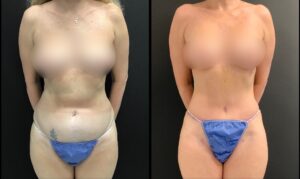
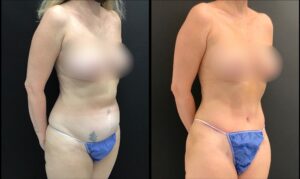
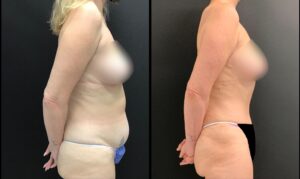
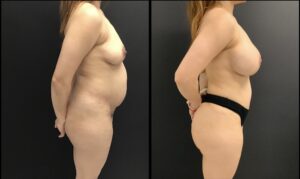
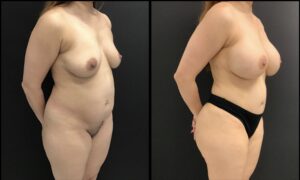

Patients who are not happy with the way their tummy looks may benefit from one of several procedures:
Tummy Liposuction: Some people requesting an abdominoplasty may be better candidates for abdominal liposuction. If they have good skin tone, good muscle tone, and minimal or moderate extra fat, then liposuction will offer a very viable alternative to an abdominoplasty. The advantage is a quicker recovery period, and avoidance of the lower abdominal scar. A special form of abdominal liposuction is the creation of a six-pack abdomen with abdominal etching to showcase the abdominal muscles after the fat around them has been liposuctioned.
Mini Tummy Tuck: This is a procedure that applies only to a very small population. We do not encourage my patients to have it because, in my experience, mini tummy tuck patients usually are unhappy with the result of their procedure, and end up having a regular tummy tuck in the future. The main reason for dissatisfaction with a mini tummy tuck is the fact that it does not provide a marked improvement of the abdominal contour. Nevertheless, this procedure leaves the patient with a scar that is almost as long as that of an abdominoplasty.
Tummy Tuck: The procedure takes about two to three hours on the average, and it involves making an incision in the lower abdomen, from hip to hip, elevating the skin and fat flap up to the ribcage, and removing the excess skin without injuring the belly button. As the skin and fat flap is elevated, the abdominal muscles are tightened to create firm abdominal muscles. By tightening the muscles, a nice waistline is formed. Next, the skin is closed leaving a scar in the lower abdomen and one around the belly button. The flanks, or sides, are liposuctioned, if needed, further enhancing the patient’s waistline. The end result is a firmer, more aesthetically pleasing, abdomen.
Lipo Abdominoplasty or Marriage Abdominoplasty:
Lipo Abdominoplasty or Marriage Abdominoplasty combines both a tummy tuck with more significant liposuction to contour the entire torso. This procedure takes about three to four hours and is very effective in contouring the abdomen, waistline, and lower back with a combination of skin removal and targeted liposuction. The muscles of the abdomen are tightened and the excess skin is removed. This procedure is very effective in restoring the “hour glass” figure that many women long to restore.
Extended Tummy Tuck: This procedure can be thought of as an exaggerated tummy tuck: More skin is removed, more fat is removed, and more significant muscle tightening is accomplished. One particular type of extended tummy tuck that is popular in my practice is the “inverted T” extended abdominoplasty. It is performed in a similar way to the regular abdominoplasty, but if excess skin is noted, in the middle of the abdomen, then that skin is excised in a vertical fashion, leaving a vertical scar, that forms an “inverted T,” with a lower horizontal scar. This operation is very beneficial for someone who has lost massive amounts of weight, i.e. a gastric bypass patient. The extra midline scar is offset by the nice waistline contour that this extra step provides the patient.
At the Bitar Cosmetic Surgery Institute, we take pride in making sure we provide for our patients the best surgical experience possible , anticipating problems or set-backs, and addressing them before they happen. This is a process that includes the pre-operative preparation, the actual surgery, and the after care.
General Complications:
General complications can occur with any surgery. Cosmetic surgery is usually a safe surgery performed on healthy patients and, as all surgeries go, is with low risk. What we do to even lower the risk of complications is to operate at a first class hospital with board certified anesthesiologists and nurses. To avoid post-operative complications, we advocate early mobilization –patients seen in our office one or two days after surgery- and active participation in their own post-operative care. When we create a partnership, the results invariably improve.
Bleeding
Bleeding after a tummy tuck is rare. Before surgery, our patients are tested to make sure they don’t have any common bleeding disorders by their own physicians, and by lab tests. The use of tumescent solution before liposuction of the abdominal flanks, if it is performed during a tummy tuck, minimizes bleeding. Also, at the end of the operation, two drains are placed under the skin to manage any early post-operative bleeding. In our practice the rate of significant bleeding is less than 1%. The treatment of a hematoma or a blood clot under the abdominal skin is to open the incision and evacuate the blood clot. Typically this is a straightforward procedure.
Infection/Wounds
The most important step in avoiding infections/wounds, in my opinion, is to perform the surgery at a first-rate surgical facility with board certified anesthesiologists and nurses. Patients are given the appropriate intravenous antibiotics coverage throughout the surgery. During the surgery, the skin surface of the patient is cleaned properly. After the procedure, our patients are prescribed a one-week course of antibiotics to minimize infection. As a result of these extra precautions, our rate of infection after a tummy tuck is extremely rare. Conservative removal of skin is important for the results to be good, but also so that the skin is not under too much tension after abdominoplasty. It may occur at the superficial incision level where the tension is highest, in the lower mid-abdomen, and a small open wound may occur which will usually heal nicely with dressing changes and antibiotic ointment. Pre-operative hibiclens (chlorhexidine) showers, avoidance of shaving the surgical site, smoking, and hypothermia during surgery are all effective ways of reducing the risk of infection.
Nerve Injury
By elevating the skin in the abdomen to perform an abdominoplasty, the nerves that provide sensation to the abdomen are cut, and sensation over most of the abdomen, especially the lower portion, is lost for months. After a year, sensation usually returns, but not completely. This fact is significant for patients to understand so that they will not put heating pads or cold compresses on their abdomen after surgery because with nerve sensation absence, a burn may occur.
Smoking is an absolute contraindication in tummy tuck. The carbon monoxide and nicotine in cigarette smoke causes severe reduction in blood supply to the skin and tissue during healing. This results in delayed wound healing, wound separation, death of the skin, and a higher risk of infection. Cotinine testing is performed in patients with a smoking history to ensure that they are safe when having this procedure.
Our office will provide you with a detailed post-operative instruction sheet that will be individualized to your needs. We usually see patients the day after surgery in one of our offices to make sure that everything is O.K., and that you are healing as planned. Multiple visits in the year after the procedure will ensure the best outcome possible.
For more information about this procedure call our office and speak to our friendly staff member at 703-206-0506.
Information on this web site is for information only. Do not use the information to diagnose or treat your plastic surgery or cosmetic surgery problems. Please contact your plastic surgeon with all questions and concerns.


